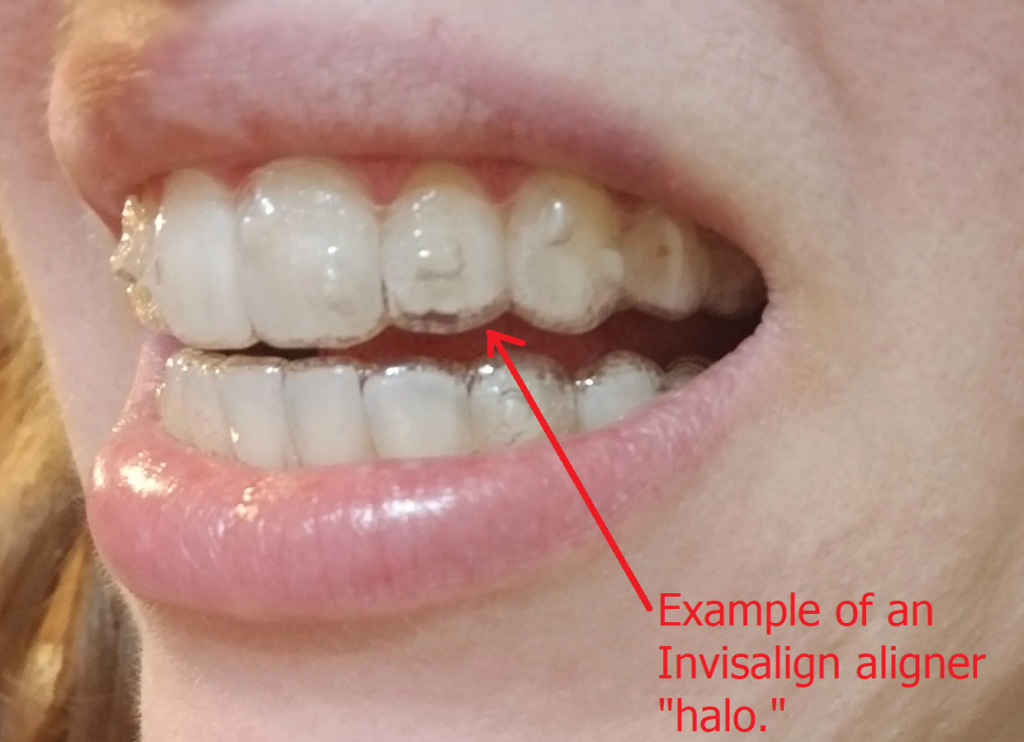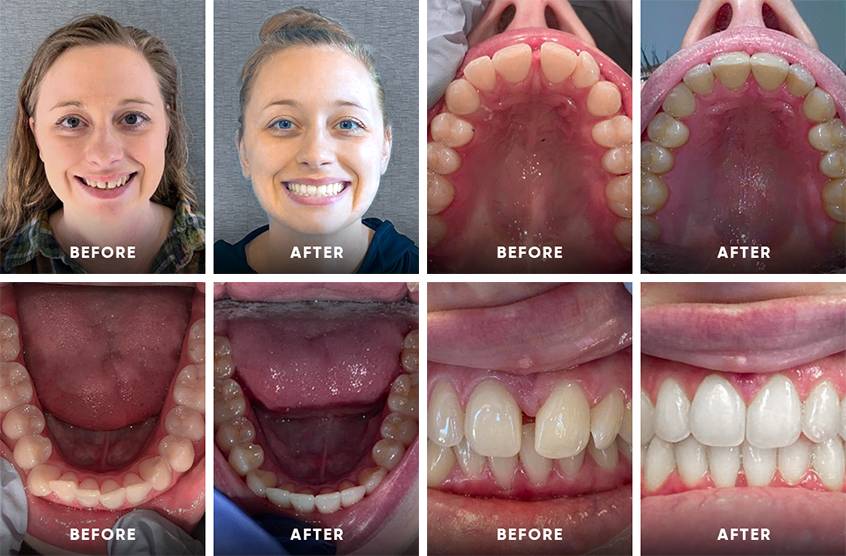The Ultimate Contrast: Invisalign vs. Traditional Braces for Grownups
The Ultimate Contrast: Invisalign vs. Traditional Braces for Grownups
Blog Article
Invisalign vs. Typical Braces: Which Option Is Right for You?
When thinking about orthodontic therapy, the selection in between Invisalign and typical dental braces offers a number of vital factors that merit mindful analysis. Invisalign provides a discreet choice with removable aligners, while conventional dental braces supply a much more noticeable yet effective solution for severe misalignment. Each choice includes unique benefits and disadvantages connected to aesthetic appeals, convenience, treatment duration, and cost. Understanding these subtleties is crucial for making a notified decision that straightens with your individual choices and way of living. The inquiry continues to be: which option will best meet your orthodontic demands and expectations?
Overview of Treatment Choices

In contrast, standard braces include metal brackets and wires that are adhered to the teeth. This technique applies continuous stress with time to achieve alignment. While reliable for complicated orthodontic concerns, standard braces call for regular check outs for adjustments and can position difficulties in preserving dental health because of the difficulty of cleansing about brackets and cables.
Both alternatives have their benefits, and the option frequently depends upon certain oral conditions, lifestyle choices, and individual compliance. Eventually, speaking with an orthodontic professional is vital for determining one of the most ideal treatment strategy customized to private needs. Comprehending the nuances of each choice can considerably influence the total success of orthodontic therapy.
Aesthetic Factors To Consider
A substantial aspect affecting the choice in between Invisalign and standard braces is the aesthetic appeal each treatment provides. Invisalign aligners are crafted from clear plastic, making them virtually undetectable when put on.
In comparison, conventional dental braces include steel brackets and cords, which can be more visible. While innovations in orthodontic innovation have resulted in the advancement of smaller sized brackets and colored elastics, traditional dental braces still maintain a more noticeable profile. For some people, the exposure of dental braces may deter them from looking for needed therapy.
Ultimately, the option in between Invisalign and typical dental braces might depend upon individual choices relating to looks. Clients that focus on discernment frequently lean toward Invisalign, while those that are less worried about presence may choose for standard dental braces. Comprehending the aesthetic effects of each option is important for making an educated decision that aligns with one's way of life and preferences.
Convenience and Convenience
In terms of ease, Invisalign aligners are removable, making it possible for clients to enjoy their favored foods without limitation and preserve optimal dental hygiene. Cleaning and her explanation flossing are simplified, as the aligners can be gotten throughout these regimens, whereas conventional braces require cautious navigating around brackets and wires.
Additionally, Invisalign's progressive system allows for less orthodontic gos to. Clients usually receive numerous sets this page of aligners simultaneously, which can enhance the therapy procedure and decrease time invested in the orthodontist's chair. On the other hand, standard braces necessitate routine modifications, making them much less convenient for those with busy routines. Invisalign. In general, the convenience and comfort of Invisalign make it an attractive choice for lots of individuals looking for orthodontic therapy.
Therapy Period and Performance
While both Invisalign and conventional braces are reliable in dealing with oral imbalances, the period of therapy can differ substantially between the two options. Generally, Invisalign therapy can take anywhere from 12 to 18 months, depending on the intricacy of the case. The clear aligners work by progressively moving teeth right into their desired settings, and routine follow-ups with an orthodontist aid ensure progress remains on track.
In comparison, conventional braces commonly need a longer dedication, usually ranging from 18 months to 3 years. This is due to their fixed nature and the usage of wires and brackets, which can be much more effective for complex instances and severe imbalances (Invisalign). The therapy effectiveness of conventional braces is well-documented, as they permit specific adjustments and greater control over tooth activity
Eventually, the choice between Invisalign and traditional braces might rest on both the awaited therapy period and the specific oral issues at hand. Consulting with an orthodontist is essential, as they can supply customized suggestions based on individual requirements, making certain the picked technique lines up with preferred results and timeframes.
Expense Comparison and Insurance Policy Options
Cost plays a substantial duty in the decision-making procedure for individuals considering orthodontic treatment, whether choosing Invisalign or typical dental braces. Typically, the expense of Invisalign arrays from $3,000 to $8,000, while typical braces typically cost between $2,000 and $6,000. Variables affecting these costs consist of the intricacy of the case, the duration of therapy, and geographical location.
Insurance policy insurance coverage can substantially impact out-of-pocket expenses. Many oral insurance coverage plans supply partial coverage for orthodontic therapies, but the specifics can differ extensively. It is important for people to assess their insurance plan to figure out the degree of coverage for either alternative. Typically, standard braces may be a lot more frequently covered by insurance policy plans compared to Invisalign, which some insurance companies classify as an aesthetic treatment.
In addition, a number of orthodontic methods supply adaptable payment plans, making both treatment alternatives extra easily accessible. Clients ought link to ask concerning prospective funding choices and price cuts for ahead of time repayments. Reviewing the complete expense, consisting of insurance benefits and layaway plan, is vital for making an informed decision that aligns with both aesthetic preferences and budget plan factors to consider.

Final Thought
In recap, the choice in between Invisalign and conventional braces depends upon numerous variables, consisting of aesthetic choices, convenience, therapy period, and price. Invisalign provides a discreet, detachable choice that facilitates dental health and nutritional versatility, while typical dental braces might be a lot more suitable for intricate oral problems and frequently come at a lower cost factor. Ultimately, assessment with an orthodontist is important to assess private scenarios and establish the most proper treatment alternative for accomplishing optimal dental positioning.
When considering orthodontic treatment, the selection between Invisalign and conventional braces presents several important aspects that warrant cautious assessment.Contrasting Invisalign and conventional braces discloses unique treatment alternatives for orthodontic correction.While both Invisalign and standard dental braces are effective in fixing oral imbalances, the duration of therapy can differ substantially in between the two choices.Cost plays a substantial duty in the decision-making process for individuals taking into consideration orthodontic treatment, whether deciding for Invisalign or traditional braces.In summary, the choice in between Invisalign and typical dental braces hinges on multiple variables, including aesthetic preferences, comfort, therapy period, and price.
Report this page